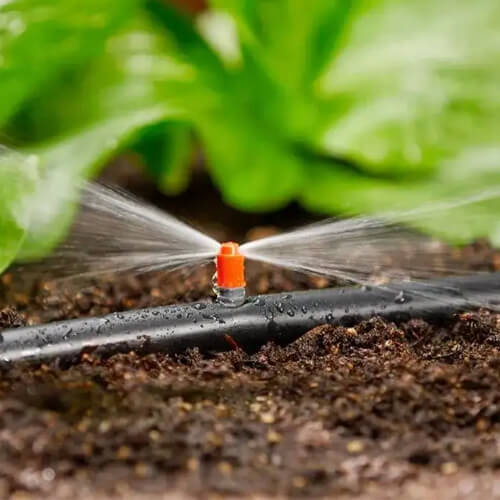
If you’re tired of overwatering your lawn or juggling sprinkler timers every time the weather changes, you’re not alone. Many homeowners are making the switch to smart irrigation systems—and for good reason. Not only do they help you save water (and money), but they also take the guesswork out of watering your yard.
Whether you’re tech-savvy or just someone who loves a green, healthy lawn without all the hassle, installing a smart irrigation system is a game-changer. And if you’re thinking about a professional irrigation system installation from San Jose, CA, you’re already on the right track.
But if you’re the DIY type, this guide will walk you through the process step by step. Let’s get into it!
Step 1: Understand What a Smart Irrigation System Is
Before diving into the nuts and bolts, it’s important to understand what makes a system “smart.” A smart irrigation system connects to your Wi-Fi and uses weather data, soil moisture sensors, and scheduling software to water your lawn only when needed.
Unlike traditional systems that run on a fixed schedule (rain or shine), smart systems adapt. That means no more watering during a rainstorm or running your sprinklers while you’re on vacation.
Step 2: Gather Your Tools and Materials
Here’s what you’ll need to get started:
-
Smart irrigation controller (like Rachio, Orbit B-hyve, or RainMachine)
-
Compatible sprinkler valves
-
Valve manifold (if needed)
-
PVC piping and fittings
-
Teflon tape and PVC cement
-
Wire connectors
-
Shovel
-
Smartphone (to set up the app)
Optional: Rain or soil moisture sensors, drip irrigation lines for garden beds
Step 3: Plan Your Layout
Planning is key to a successful irrigation system installation. Start by mapping out your yard. Divide it into zones based on sun exposure, plant type, and water needs. For example, your lawn might be one zone, garden beds another, and shady areas yet another.
This zoning helps your smart controller water each area according to its specific needs. Many systems support multiple zones—just make sure the one you choose can handle your setup.
Step 4: Install the Sprinkler Valves
Once your layout is ready, it’s time to dig in—literally. Install your sprinkler valves in a valve box and connect them to your water source. If you’re replacing an old system, you can often reuse the existing valve setup.
Each valve controls one zone, so label them accordingly. Connect your pipes to the valves, making sure to use PVC cement for a watertight seal. Use Teflon tape on threaded connections to prevent leaks.
Step 5: Wire the Valves to the Controller
Next, run low-voltage irrigation wire from each valve to your smart controller. This part might seem intimidating, but it’s simpler than it looks.
Each valve will have two wires—one common wire (which all valves share) and one individual wire for each zone. Connect these to the appropriate terminals on your controller, following the manufacturer’s guide.
Use waterproof wire connectors to keep everything secure, especially if these wires are buried underground.
Step 6: Mount and Connect Your Smart Controller
Now for the brain of your system—the smart controller. Mount it near a power source, usually inside a garage or on an exterior wall. Make sure it has access to your home’s Wi-Fi network.
Once it’s powered up, download the controller’s app on your phone. The app will walk you through the setup process, including:
-
Connecting to Wi-Fi
-
Naming your zones
-
Setting up schedules
-
Integrating weather data
Most apps let you control your system remotely, so you can turn it on or off from anywhere—whether you’re at work or lying on the beach.
Step 7: Test and Adjust
Before you bury any pipes or finalize the setup, test each zone. Turn on the system through the app and make sure the sprinklers are spraying in the right direction and covering the intended areas.
Check for leaks, clogs, or any misaligned heads. Adjust the spray patterns and replace any faulty parts. Once everything’s working smoothly, bury the pipes and tidy up the landscape.
Bonus Tip: Use Sensors for Maximum Efficiency
Want to take things up a notch? Add soil moisture or rain sensors to your system. These give your smart controller even more data to work with, helping it decide when (and when not) to water.
Many smart systems support sensor integration and can further reduce water waste while keeping your lawn lush.
When to Call in the Pros
If the thought of digging trenches or connecting electrical wires sounds overwhelming, don’t worry—you’re not alone. Many homeowners opt for professional help, especially when upgrading from an old system.
That’s where irrigation system installation from San Jose, CA comes in handy. Local experts understand the soil, climate, and seasonal watering restrictions in your area. They’ll ensure your system is not only installed properly but also optimized for efficiency.
Final Thoughts
Installing a smart irrigation system might take a bit of upfront effort, but the payoff is huge. You’ll save water, lower your utility bills, and have a healthier, greener yard with minimal maintenance. Whether you go the DIY route or hire a pro, you’ll wonder why you didn’t switch sooner.